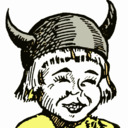Over the last year, Special Collections staff has embarked on a massive shifting project. Prompted by a desire to utilize our space more efficiently, and make more space for incoming materials, we began shifting our largest book collection, the Day-Northwest Book Collection. Consisting of over 24,400 individual titles, it took us approximately a year of intermittent work, and the gumption of a wonderful student worker to finish the first phase of the shifting project.
Once this collection was done, the second phase began, moving our rare book collection (endearingly referred to as Spec-Spec by staff) to some of the now open shelves. Beginning with the oversized materials we began the new moving project. It was during this phase, that we discovered something odd with our volumes of Le Livre des Mille Nuits et une Nuit by J.C. Madrus. The volumes were covered in a white powder. At first, our staff that “Oh no! Mold!” but on closer inspection it didn’t seem right.
The white powder was all over the cover of the book, but there wasn’t any indication of danger to the pages inside. The white powder had an almost metallic tint to it. Also, the white powder seemed to have spread to the metal shelf housing the book, but not the book right next to it (odd for a mold to spread to metal…). None of this was consistent with what we knew mold to be. To our knowledge, there was nothing inherent in a leather binding that would degrade leaving a white powder. We were stumped, so we did what any good archivist would do. We Googled it. Searching images with the keywords “green book white powder residue” we found an image of a book in a similar condition to our own. The image was tied to an article on the American Libraries Magazine website entitled The Mysterious Case of White Film on Old Books written by Malia Van Heukelem a former preservation management specialist at the Univesrity of Hawaii at Manoa’s Hamilton Library Preservation Department. In the article she detailed what they did when they found some books with seemingly the same white powder as us. After much research and consultation from professionals in various fields, it was determined to be sebacic acid, a non-toxic chemical that is relatively easy to clean.
After celebrating at finding an article so quickly to explain our dilemma, we decided to clean the powder off of our books using a microfiber cloth, and continue shifting our oversized books. Now, all of our oversized “Spec-Spec” books are happy on their new shelves, and we are better prepared to care for them moving forward with our knowledge of sebacic acid. Thanks to all the other archivists, who share their discoveries online, so we can help each other out!


![Sebacic Acid Residue [2]](https://objects.lib.uidaho.edu/harvester/small/sebacic_acid_03_sm.jpg)
![Sebacic Acid Residue [1]](https://objects.lib.uidaho.edu/harvester/small/sebacic_acid_02_sm.jpg)
![Sebacic Acid Residue [3]](https://objects.lib.uidaho.edu/harvester/small/sebacic_acid_04_sm.jpg)
